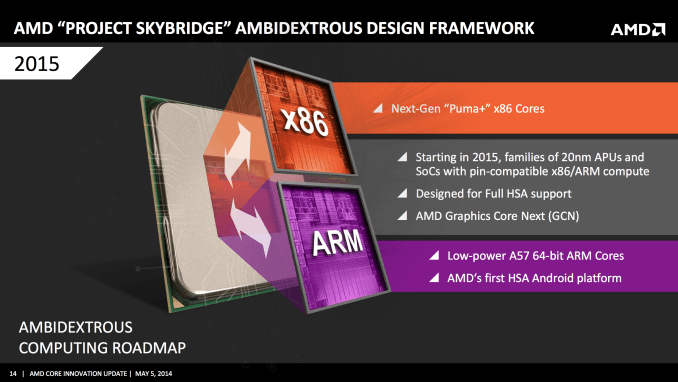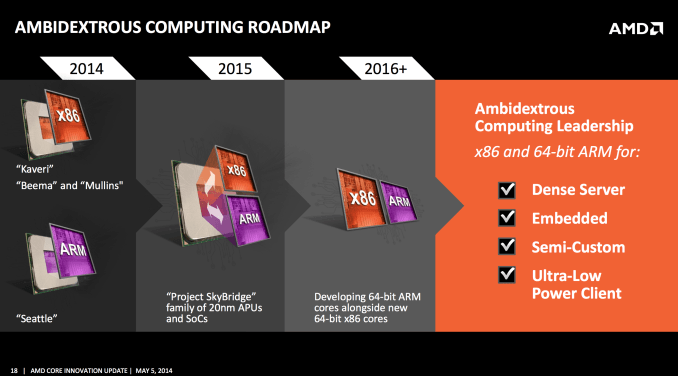As part of an update to AMD's CPU and SoC roadmap, the company yesterday announced a new project that they've been working on that will see their ARM and x86 efforts come closer together. Called 'Project SkyBridge', starting in 2015 AMD will release ARM SoCs that are pin-compatible with their next-generation x86 SoCs, creating what they call an "ambidextrous design framework".

The family of ARM SoCs will be built on a 20nm process and utilize ARM's Cortex-A57 64-bit CPU core design, as well as AMD's Graphics Core Next GPU architecture. These chips will be the first from AMD to officially support Android, and will be HSA compatible. As part of Project SkyBridge, they'll be seen alongside new 20nm x86 APUs with Puma+ CPU cores.
The idea behind pin-compatible ARM and x86 SoC designs is to create a single baseline platform that can be purposed either for lower-end, ultra-low power devices (ARM), or more powerful systems (x86). OEMs will have the flexibility to develop a Project SkyBridge platform that they can use across an entire range of hardware, reducing development costs and simplifying the process.
It's theoretically possible that Project SkyBridge could give rise to socketed desktop motherboards that support both ARM and x86 SoCs, however the SoCs in question are geared more towards tablets and low-power notebooks than high-power desktops. In fact AMD has yet to mention where their high-power chips factor in under the SkyBridge model.

In other news, AMD is currently developing their own, custom 64-bit ARMv8 CPU core that will hit the market in 2016. This project is codenamed 'K12', and will be seen alongside next-generation (and currently unnamed) x86 SoCs in their ambidextrous computing environment.
There aren't many details currently on K12, as it's still two years down the track, but it - alongside Project SkyBridge - will target server, embedded, semi-custom and ultra-low power client markets.